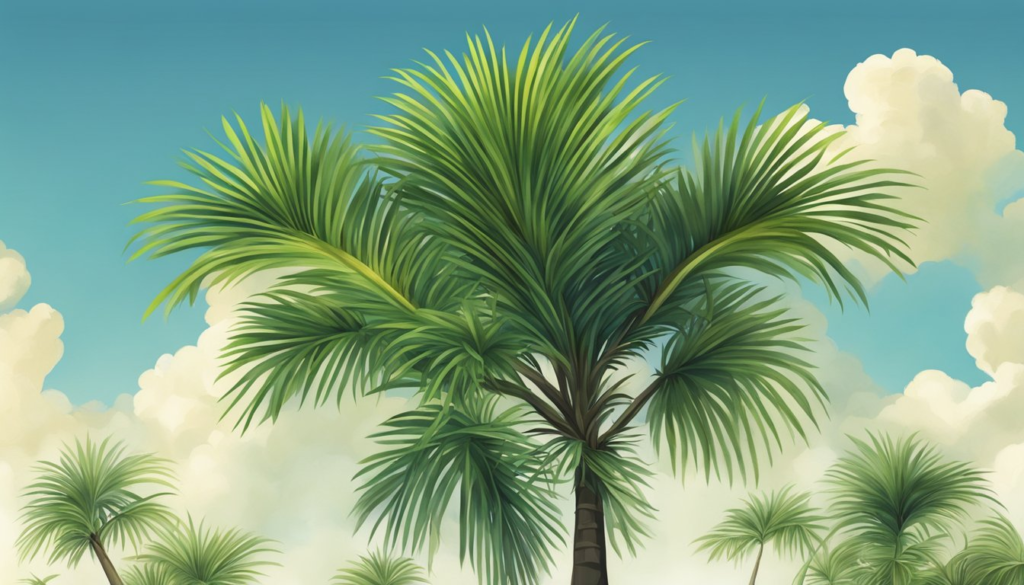The Royal Palm, scientifically known as Roystonea regia, stands as one of the most majestic and iconic symbols of the Caribbean. Revered for its elegance and grandeur, this palm is often associated with tropical beauty, serenity, and the vibrant culture of the region.
Commonly found lining roads, adorning public spaces, and flourishing in gardens across the Caribbean, the Royal Palm holds a special place in the hearts of those who live in or visit the tropics.
This article provides a detailed description of the Royal Palm, including its physical characteristics, cultural significance, and ecological importance.
Physical Characteristics of the Royal Palm
The Royal Palm is a true giant among palms, easily recognized by its smooth, towering trunk and graceful, arching fronds. It is one of the most visually striking trees found in tropical regions, reaching impressive heights that can transform any landscape.
1. Height and Structure
The Royal Palm can grow up to 80 to 100 feet (24 to 30 meters) tall, making it one of the tallest palm species in the world. Its trunk is smooth and light gray in color, often described as having a marble-like appearance. The trunk is typically straight, cylindrical, and topped with a green crownshaft, which is a smooth, tapering section just below the crown of fronds. This crownshaft, a defining feature of the Royal Palm, can be up to 6 to 8 feet (2 to 2.5 meters) long.
One of the reasons for its regal name is the tree’s ability to maintain a straight, slender trunk as it rises to great heights, lending an air of elegance to any landscape.
2. Fronds and Crown
The Royal Palm’s crown is formed by large, arching, and feathery fronds that grow from the top of the trunk. Each frond can reach lengths of up to 10 to 15 feet (3 to 4.5 meters), and the tree typically supports around 15 to 20 fronds at a time. These fronds are pinnate (feather-shaped), with leaflets arranged along a central rib.
The graceful spread of the fronds creates a lush, canopy-like structure that not only provides shade but also contributes to the tree’s aesthetic appeal. The Royal Palm’s crown is often described as lush and full, adding to its reputation as a landscape centerpiece.
3. Flowers and Fruits
The Royal Palm produces small, white to cream-colored flowers, which grow in large clusters known as inflorescences. These flowers are generally hidden among the fronds and bloom throughout the year. The tree’s fruit is a small, round drupe, about the size of a marble, turning from green to purple-black as it ripens. These fruits are not only decorative but also attract a variety of birds and wildlife, playing an important role in the local ecosystem.
Ecological Role of the Royal Palm
The Royal Palm is more than just a decorative tree; it plays a vital role in the ecology of tropical environments. Its towering presence provides habitat and resources for various species, while its structure helps in protecting soil and water systems in the regions where it grows.
1. Wildlife Habitat
The fruits of the Royal Palm are a significant food source for birds, mammals, and insects. Birds such as parrots and pigeons are particularly attracted to the tree’s abundant fruit, and they aid in seed dispersal by consuming the fruit and spreading the seeds across the landscape.
In addition to its fruit, the large fronds of the Royal Palm provide shelter for birds and small mammals, while its trunk may house various insects and invertebrates that take advantage of the shelter offered by the tree.
2. Erosion Control and Soil Health
Like many other trees, the Royal Palm plays an important role in preventing soil erosion, particularly in tropical regions prone to heavy rains and flooding. Its root system helps stabilize the soil, reducing the likelihood of erosion and landslides, especially in coastal areas where sandy or loose soils are common.
Moreover, the large canopy provided by the fronds helps moderate the temperature and humidity of the soil, creating a more stable microenvironment for other plant and animal species.
Cultural and Symbolic Importance of the Royal Palm
The Royal Palm is deeply rooted in Caribbean culture, where it is often seen as a symbol of strength, endurance, and beauty. This tree is frequently planted in public spaces, gardens, and along avenues, where its majestic appearance adds to the tropical charm of the environment.
1. National Symbolism
In several Caribbean nations, the Royal Palm is considered a national symbol. For example, in Cuba, the tree is regarded as a representation of national pride and resilience. The Royal Palm is often associated with Cuba’s rural landscape, and its image appears in art, literature, and cultural expressions throughout the island. Similarly, in countries such as Haiti and the Dominican Republic, the Royal Palm is often seen as a symbol of natural beauty and tropical identity.
2. Decorative Use in Landscaping
In landscaping, the Royal Palm is often used to create grandeur and elegance in gardens, parks, and along roads. Its tall, stately trunk and lush canopy make it a popular choice for lining long driveways, framing public spaces, and adding a sense of tropical luxury to hotels and resorts. The tree’s vertical growth and minimal maintenance requirements further contribute to its popularity in urban and residential landscaping.
3. Historical and Cultural Significance
Historically, the Royal Palm has played a role in various Caribbean cultures. The tree’s wood, although not very dense, has been used in construction for rural homes and fences, while the leaves have been utilized for roofing and thatching in traditional dwellings. Additionally, the tree is often used in religious and cultural ceremonies, symbolizing prosperity, longevity, and the connection between nature and community.
Growth and Maintenance of the Royal Palm
Although the Royal Palm is relatively low-maintenance, it thrives best in specific growing conditions that mimic its native tropical habitat.
1. Growing Conditions
- Climate: The Royal Palm flourishes in warm, humid tropical climates and is sensitive to cold temperatures. It requires a climate with little to no frost, making it ideal for regions such as the Caribbean, Florida, and parts of Southeast Asia.
- Soil: The tree prefers well-drained soils and can tolerate a variety of soil types, including sandy, loamy, and clay soils. However, it performs best in nutrient-rich soils with good drainage.
- Watering: While the Royal Palm is relatively drought-tolerant, it benefits from regular watering, particularly during dry seasons. Overwatering should be avoided, as this can lead to root rot.
2. Pruning and Maintenance
The Royal Palm requires minimal pruning, as its older fronds naturally fall away from the trunk when they age. It is important to remove dead or dying fronds to maintain the tree’s appearance and health. The tree’s smooth trunk and slow shedding of old fronds contribute to its low-maintenance nature, making it an excellent choice for public and private spaces.
Conclusion
The Royal Palm (Roystonea regia) is more than just a tree; it is a symbol of the Caribbean’s natural beauty, culture, and environmental richness. Its tall, elegant trunk and wide, arching fronds have made it a favorite in tropical landscapes, offering not only aesthetic appeal but also ecological benefits. Whether standing proudly in a public square, lining a road, or towering above a garden, the Royal Palm continues to be a defining feature of the Caribbean landscape.
FAQ
What makes the Royal Palm different from other palm trees?
The Royal Palm is distinguished by its tall, straight trunk, smooth gray bark, and lush crown of arching fronds. Its prominent green crownshaft and stately appearance set it apart from other palm species.
Where is the Royal Palm native to?
The Royal Palm is native to the Caribbean, particularly Cuba, and Central America. It thrives in tropical regions and is widely cultivated in warm climates around the world.
How tall does the Royal Palm grow?
The Royal Palm can grow up to 80 to 100 feet (24 to 30 meters) tall, making it one of the tallest palm trees.
What are the uses of the Royal Palm?
The Royal Palm is used primarily for decorative purposes in landscaping. Its fruits provide food for birds and wildlife, and historically, its leaves and wood have been used in rural construction.
Can the Royal Palm grow in cold climates?
The Royal Palm is sensitive to cold and cannot tolerate frost, making it suitable only for tropical and subtropical climates.
Does the Royal Palm require a lot of maintenance?
The Royal Palm is relatively low-maintenance. It requires occasional pruning to remove dead fronds and benefits from regular watering, especially in dry periods.

